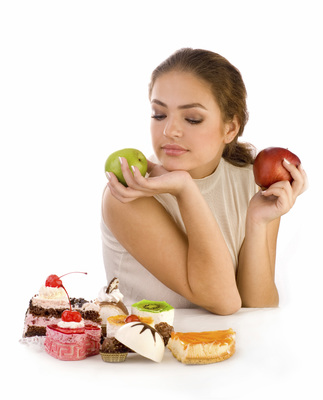EATING healthy doesn’t mean giving up all the good things in life. The healthy eating experts from the Victorian Government have released eight tips to help you enjoy a healthier diet without thowing out your chocolate stash.
1. Make half your plate fruits and vegetables. Choose red, orange, and dark-green vegetables like tomatoes, sweet potatoes, and broccoli, along with other vegetables for your meals. The more colourful you make your plate, the more likely you are to get the vitamins, minerals, and fibre your body needs to be healthy.
2. Make half the grains you eat whole grains. An easy way to eat more whole grains is to switch from a refined-grain food to a whole-grain food. For example, eat whole-wheat bread instead of white bread.
3. Switch to fat-free or low-fat milk. Both have the same amount of calcium and other essential nutrients as whole milk, but fewer calories and less saturated fat.
4. Choose a variety of lean protein foods. Meat, poultry, seafood, dry beans or peas, eggs, nuts, and seeds are considered part of the protein foods group.
5. Compare sodium in foods. Use the Nutrition Facts label to choose lower sodium versions of foods like soup, bread, and frozen meals.
6. Drink water instead of sugary drinks. Cut calories by drinking water or unsweetened beverages. Soda, energy drinks, and sports drinks are a major source of added sugar and calories. Try adding a slice of lemon, lime, or watermelon to your glass of water if you want some flavour.
7. Eat some seafood. Seafood includes fish and shellfish and contains protein, minerals, and omega-3 fatty acids. Adults should try to eat at least eight ounces a week of a variety of seafood. Children can eat smaller amounts of seafood, too.
8. Cut back on solid fats. A treat here or there is OK, but too much is bad news. Eat fewer foods that contain solid fats such as cakes, cookies, and other desserts.







